Endonasal approaches (transfixion incision and intercartilaginous incisions)
1. Introduction
Endonasal approaches to the nasal skeleton can be used for primary treatment of traumatic injuries and for secondary procedures such as septorhinoplasty to correct posttraumatic deformities.
2. Vasoconstriction and preparation
The nasal cavity should be prepared with nasal packings with a vasoconstrictor. Skin markings should be performed before the infiltration of local anesthesia.
Infiltration of local anesthesia with vasoconstrictors is performed intranasally between the skin and the osseocartilaginous structures.

3. Cartilage delivery technique for lower lateral cartilage exposure
The intercartilaginous and the transfixion incisions are often used in combination to approach the lower lateral cartilages, the septum, and the nasal bones.
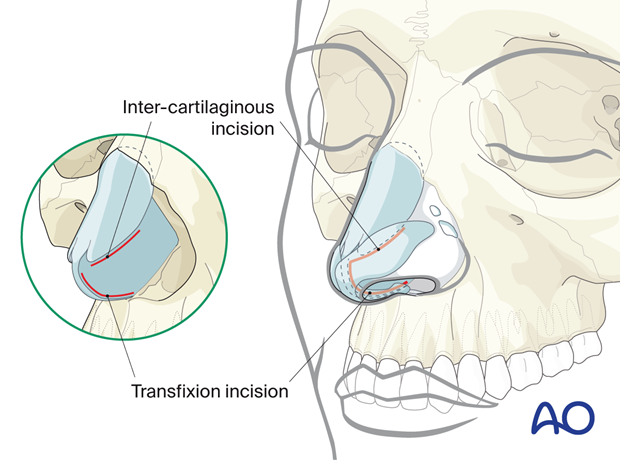
Intercartilaginous incision
The intercartilaginous incision divides the junction of the upper and lower lateral cartilages. The ala is retracted using a double skin hook. An incision is made along the inferior border of the upper lateral cartilage. The incision is then curved towards the septum, where it will meet the transfixion incision.
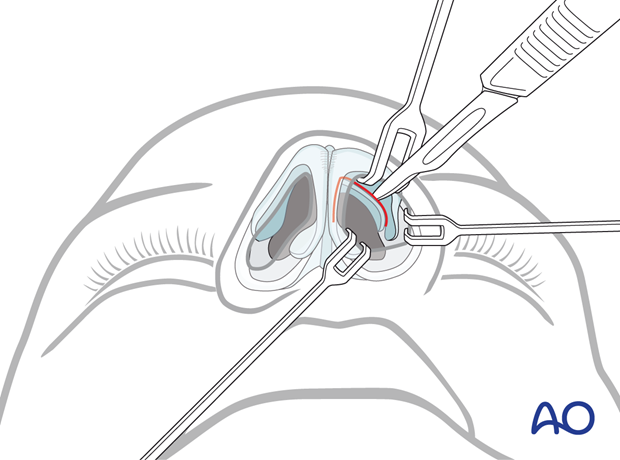
Transfixion incision
The transfixion incision is a through-and-through incision made at the caudal end of the septal cartilage. A subperichondrial dissection can be carried out on one or both sides of the septum.
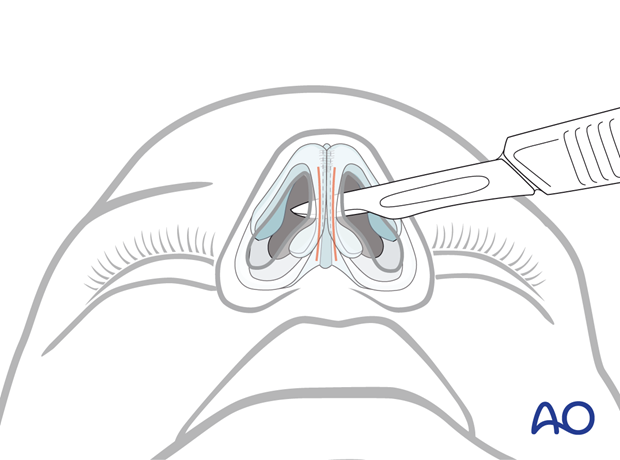
Cartilage exposure
Pointed scissors can be used for a subperichondrial dissection through the inter-cartilaginous and transfixion incisions.
The illustration shows the dissection through the inter-cartilaginous incision.
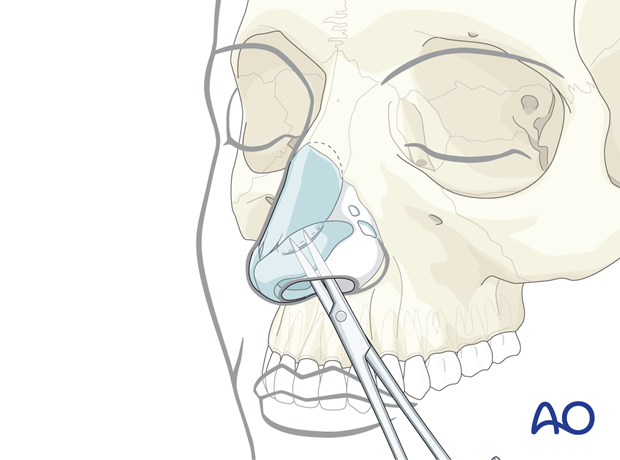
4. Exposure of the nasal dorsum and root
Access to the nasal dorsum and the root of the nose is obtained through the intercartilaginous incision.
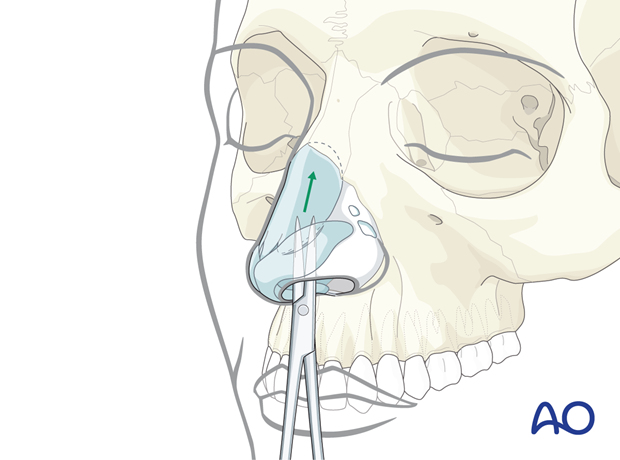
Subperiosteal dissection of the nasal bones to the level needed for the surgical procedure can be performed using a periosteal elevator.
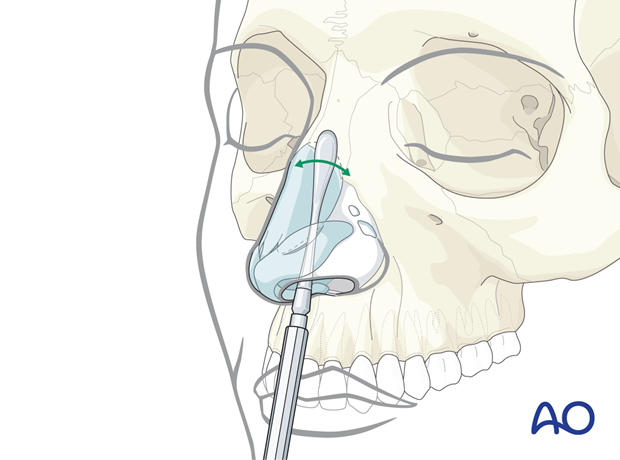
5. Exposure of the septum
Using a freer elevator in a sweeping motion through the transfixion incision, the mucoperichondrium is dissected off the entire septal cartilage and septal bone.
This is typically performed on one side only to preserve blood supply to the septal cartilage.
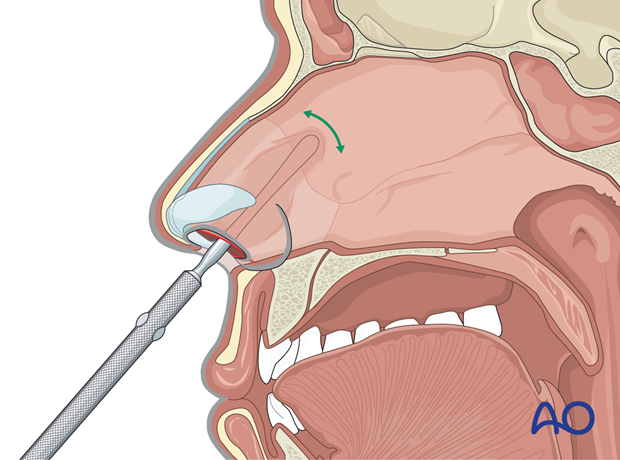
6. Closure
A quilting suture using absorbable suture material is passed back and forth through the septum to stabilize the mucosal flap and prevent septal hematoma formation.
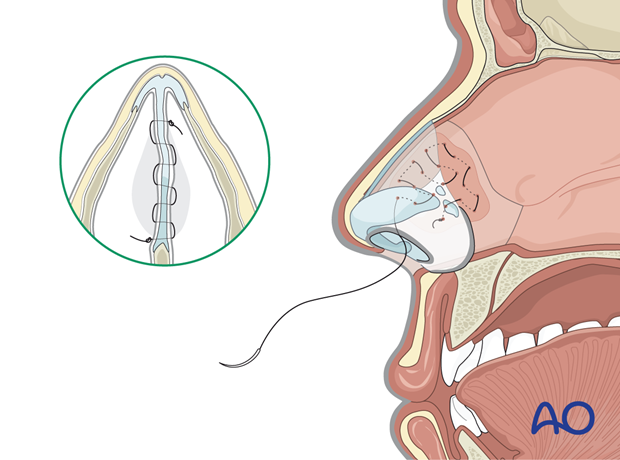
Doyle splints
It may be required to fix intranasal silastic (Doyle) splints to maintain septal height and prevent bowing while also reducing hematoma formation.

A few interrupted absorbable sutures are used to reapproximate the mucosal incisions. If necessary, a rigid external splint can be positioned to assure stability.














